site search
online catalog
A HISTORIC WAR OF 1812 USED BROWN BESS

Hover to zoom

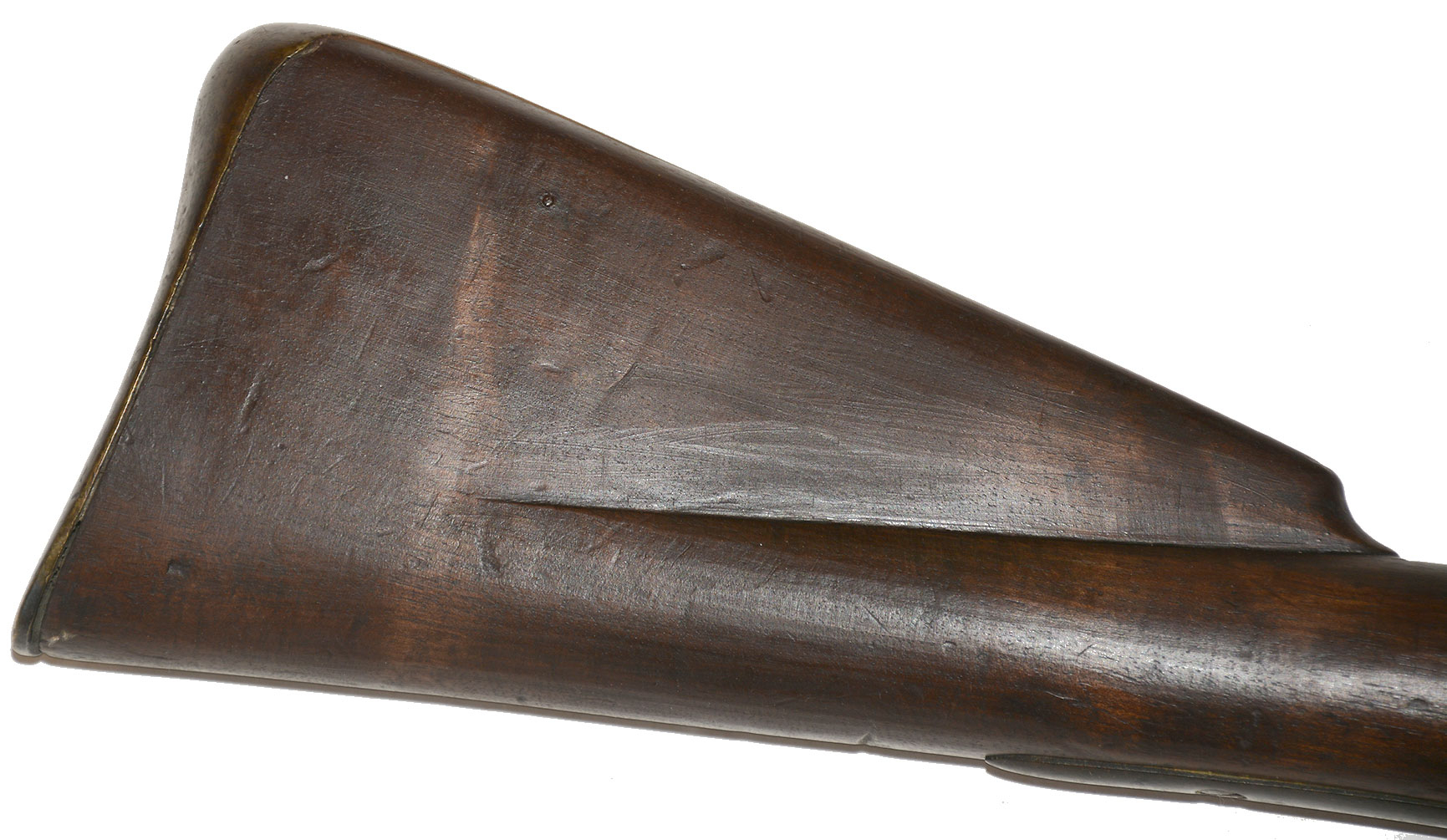


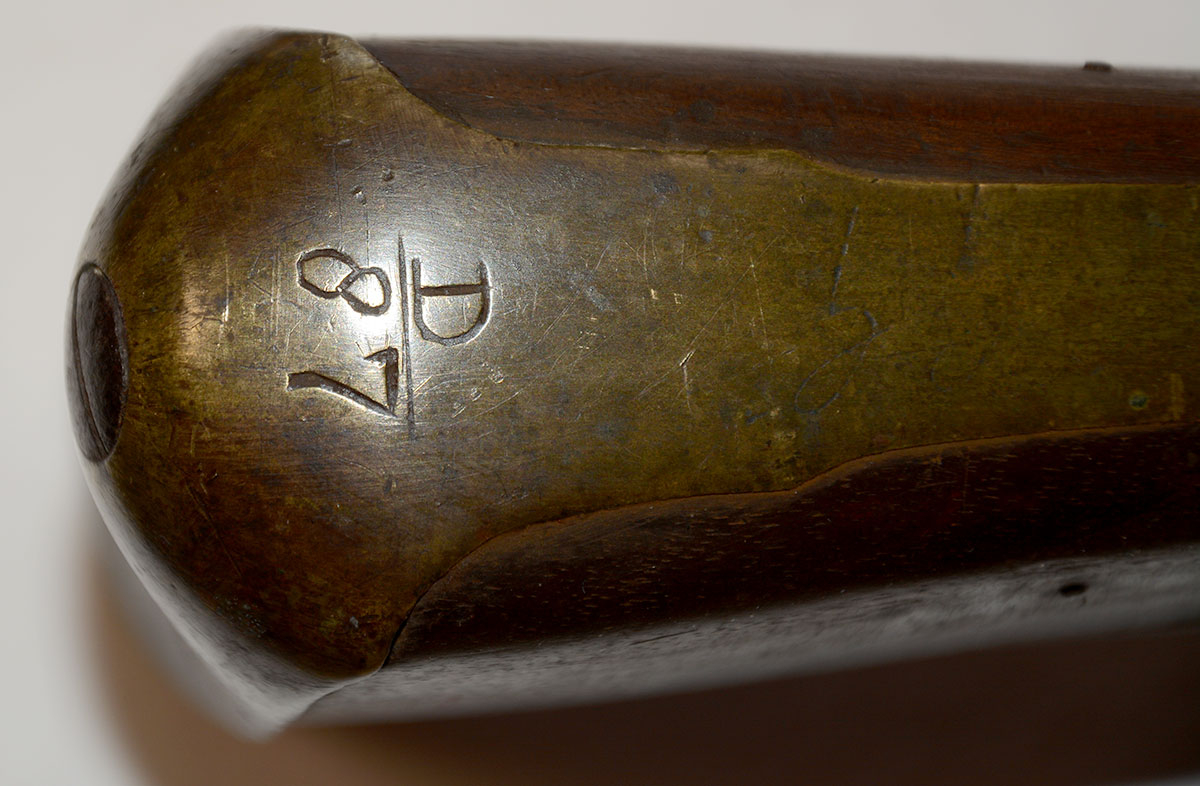
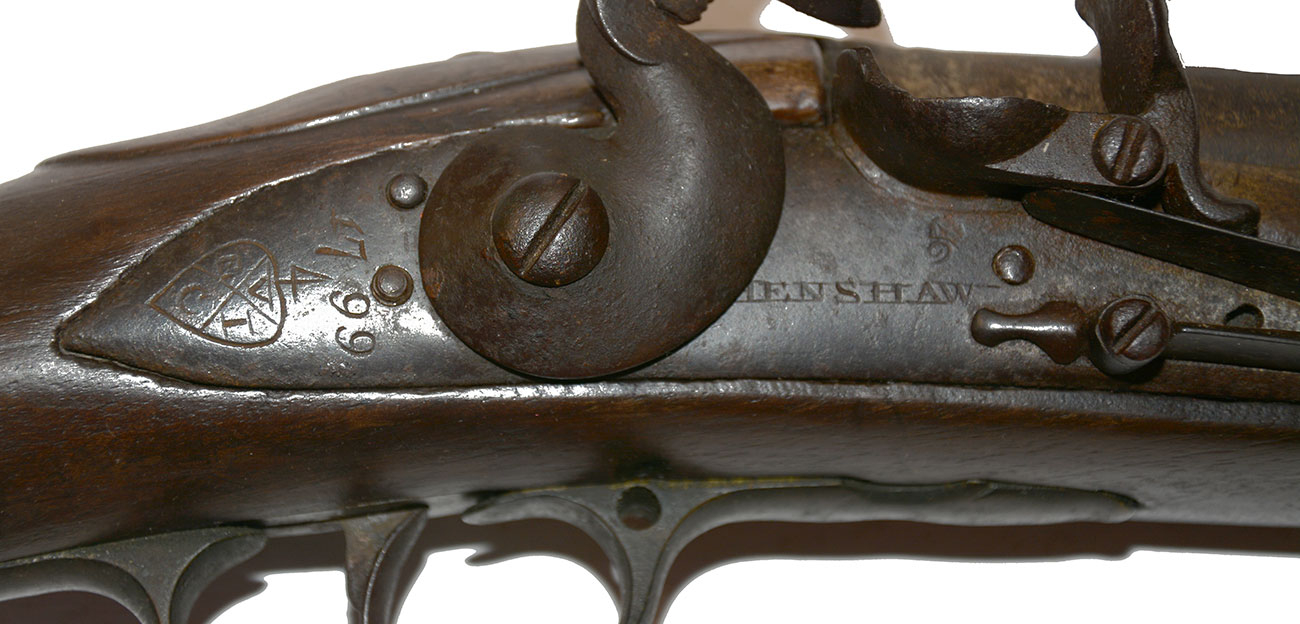
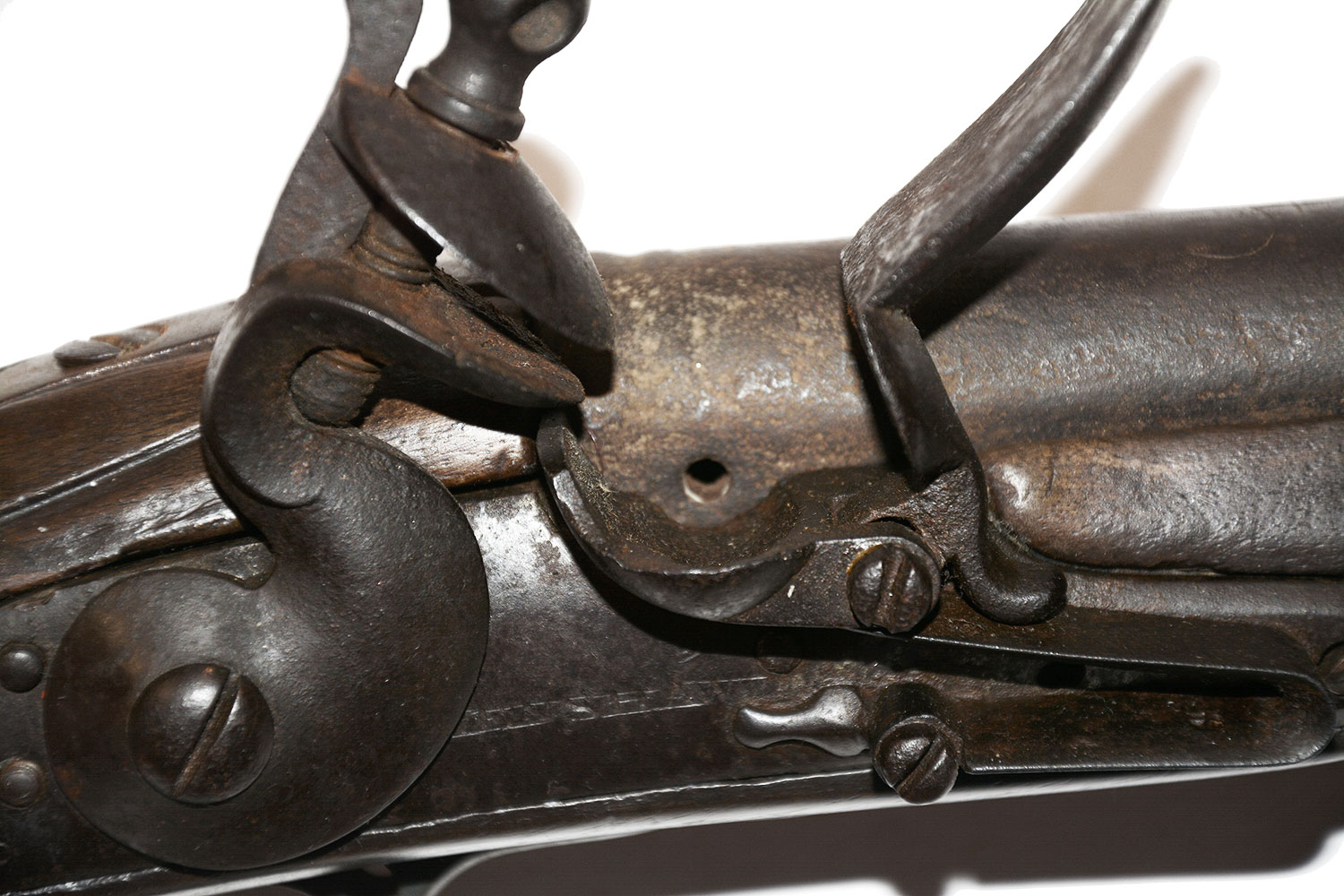



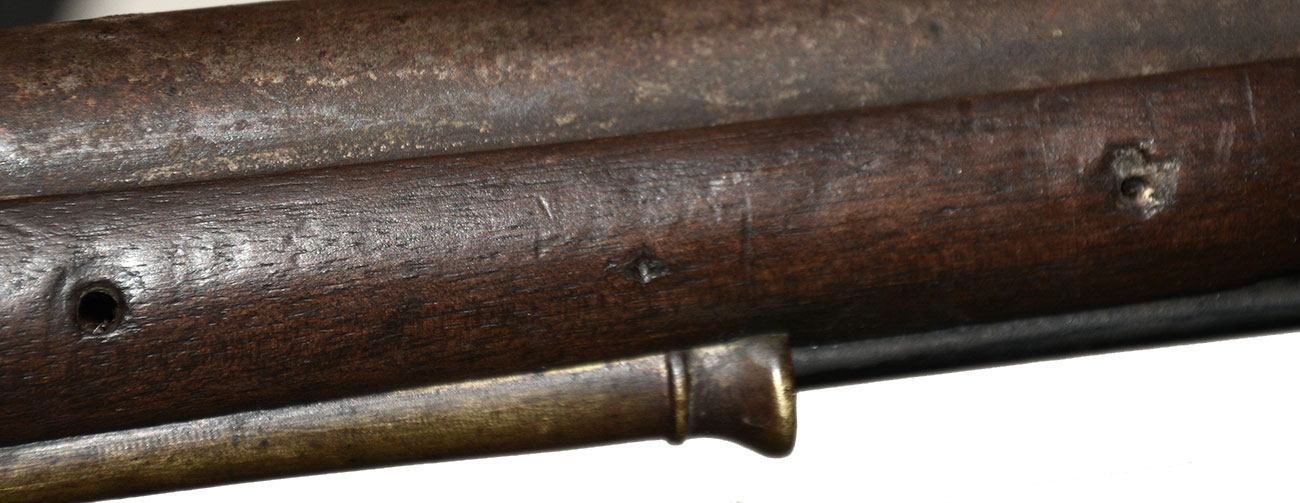
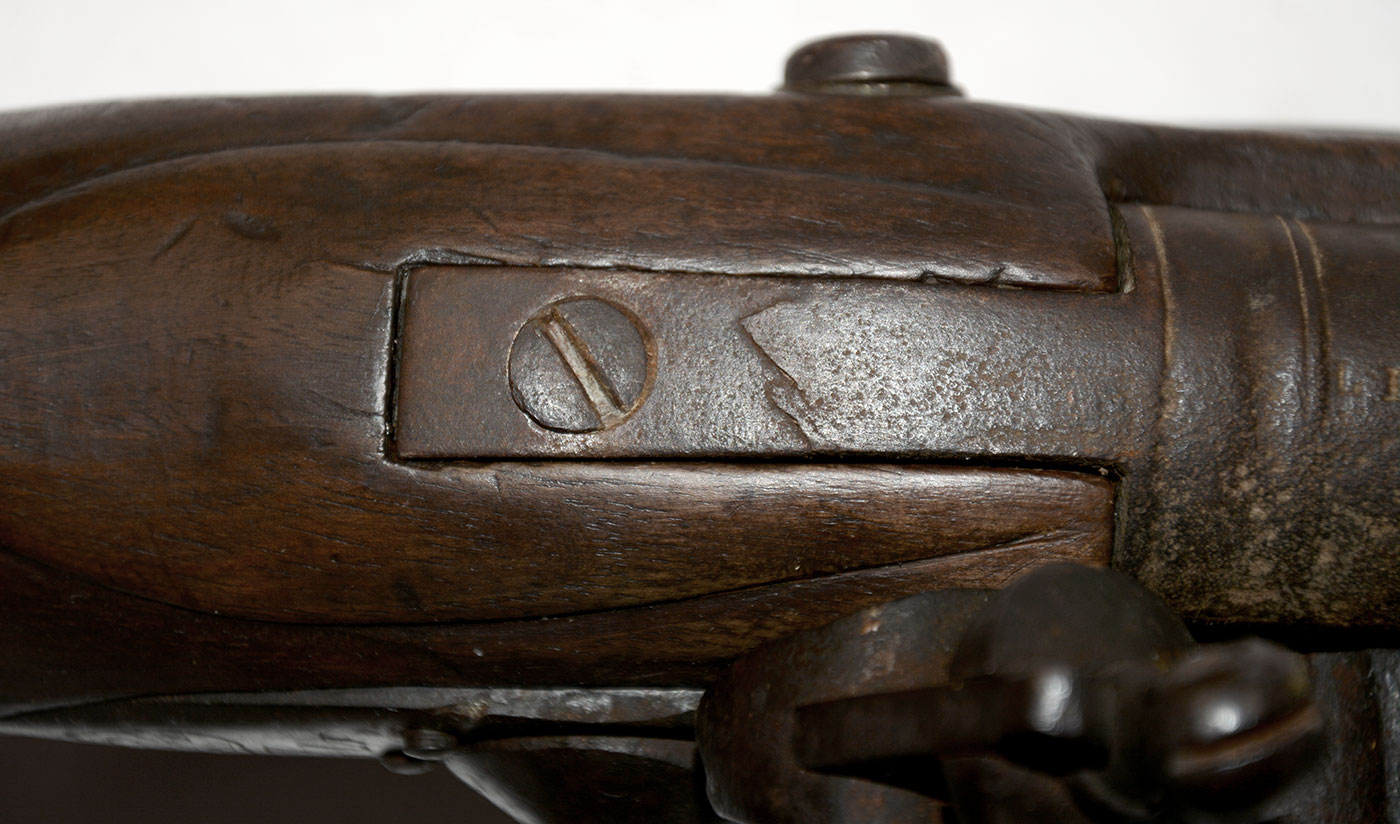
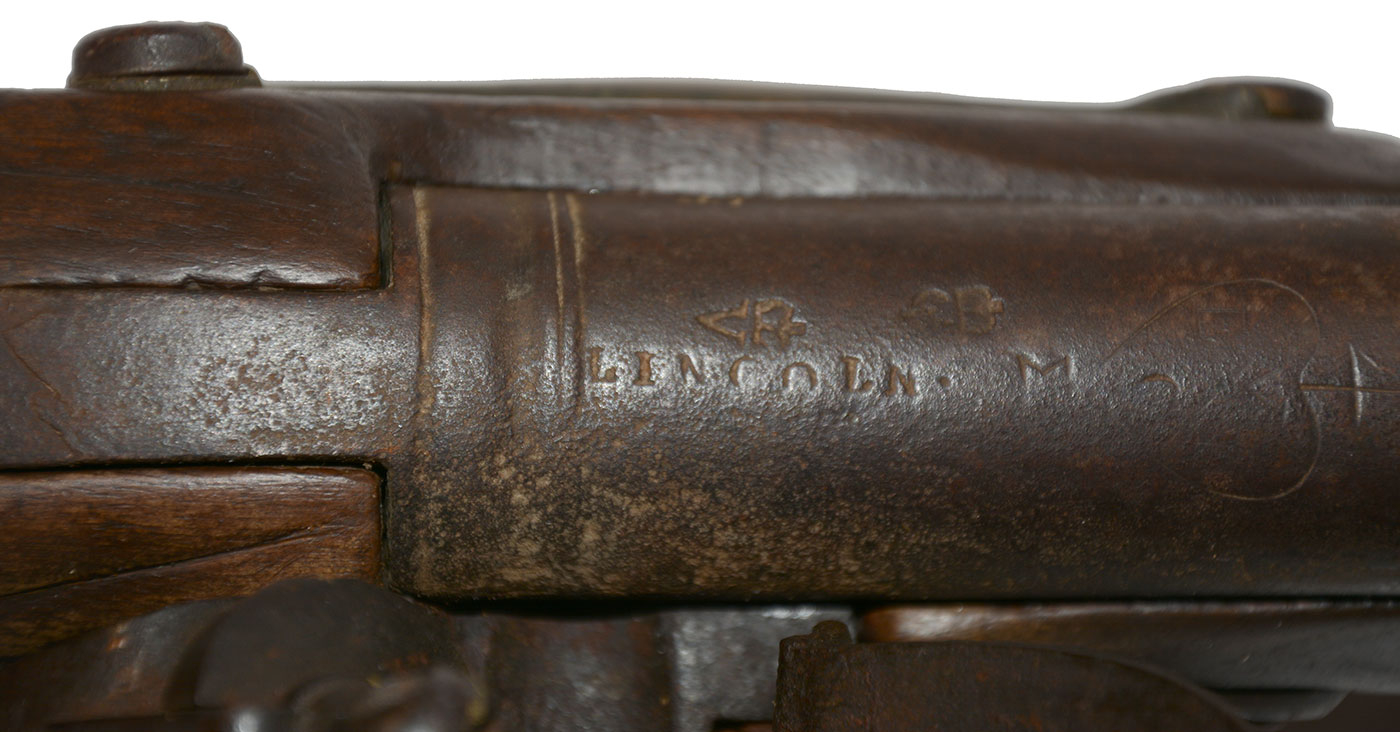
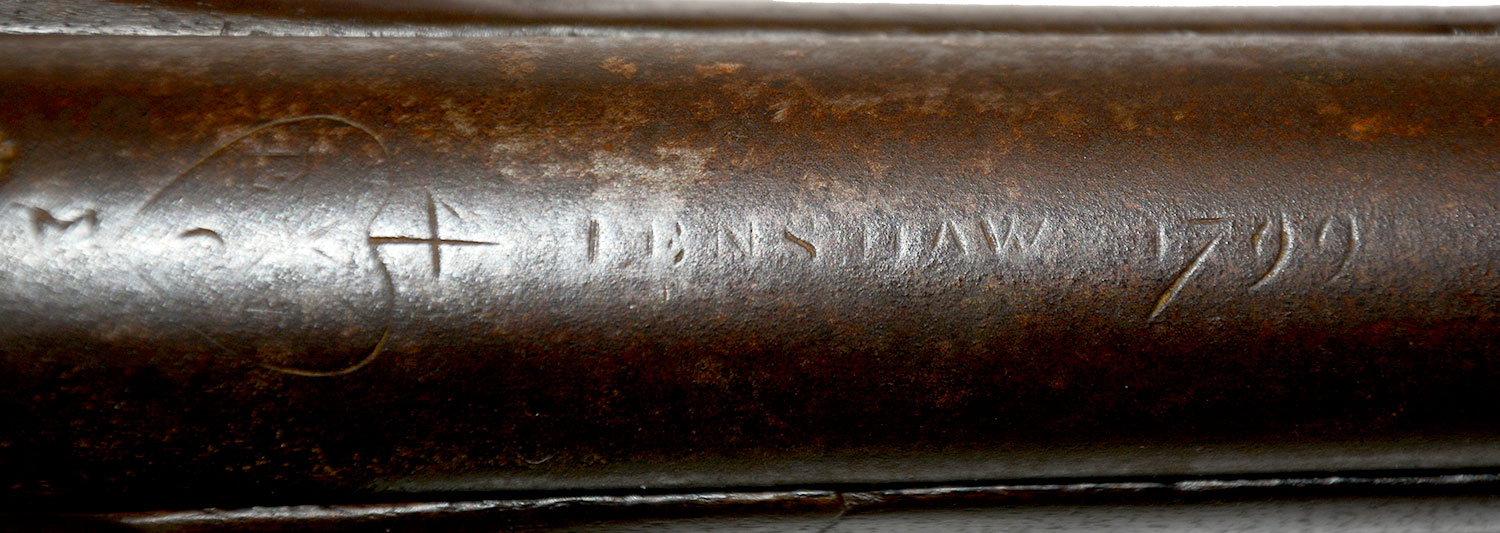

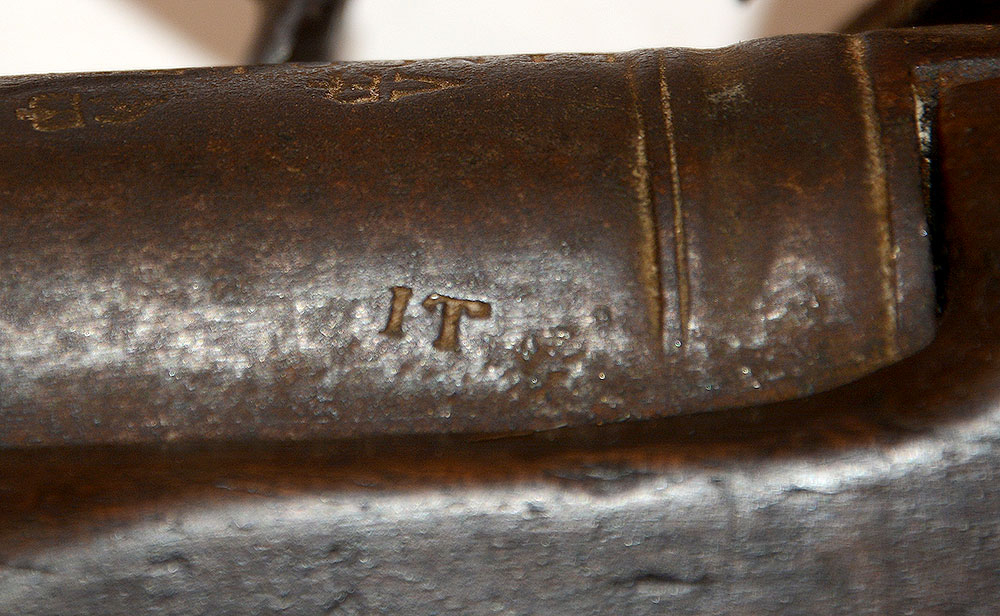


$3,950.00 ON HOLD
Quantity Available: 1
Item Code: 1037-150
This "Windus Pattern 1771" flintlock musket, aka the Brown Bess, was manufactured by Henshaw of London. It has the Venerable East India Company (VEIC) mark which consists of a heart quartered by a St. Andrew's cross engraved on the lock plate. The heart is surmounted by a "4" while in the heart is (V)enerable) over (E)ast (I)ndia (C)ompany. The lock plate is dated "1799" between the VEIC mark and the hammer and engraved with the maker's name "HENSHAW" ahead of the hammer. The lock plate has a convex surface with integral iron pan with high fence with the goose neck hammer utilized until 1809. The musket has a 39-inch round .75 caliber, smoothbore barrel with block bayonet lug/front sight. The musket has the original button head ramrod with two flared brass ramrod pipes and brass tail pipe. The English walnut stock has a brass endcap, convex brass side plate with no tail, brass trigger guard with upper finial and brass butt plate. Iron sling swivels, now missing, were located on the forearm and trigger guard. The barrel breech is stamped with London Proofs and with "IT" an inspection mark. The top of the barrel is engraved with the heart trademark of the East India Company and HENSHAW 1799. The Windus Pattern 1771 Infantry Musket was a shorter, simplified version of the Short Land Pattern Brown Bess Musket. It was adopted by the East India Company to arm the White European infantry maintained by the Company in India.
These arms were made to the highest standards so with the outbreak of war with the French Republic in 1793, the British Army urgently required muskets and purchased 30,000 Pattern 1771 muskets from the East India Company. This is one of those that was taken into British Military Stores at the Tower of London and issued to both regulars and militias across the Empire. The Pattern 1771 was soon adopted officially in 1793 by the Board of Ordnance as the "India Pattern" musket and domestic production was begun under the eye of the Board of Ordnance. A note to collectors: It is only "gun show wisdom" and nothing more that prior to 1793 and during the American Revolution that the same thing happened and that these VEIC muskets came to America for us by the British, this never happened! Even more of a fantasy is the erroneous belief that a ship was captured by American privateers on the way to India with these Brown Besses were then taken to Massachusetts and surcharged "MS" or "MASS". Again, total nonsense! The Windus Pattern muskets with dates 1771 to 1783 were, despite the dates, those taken into British stores in 1793 and later. In the 1820s the state of Massachusetts bought hundreds of these from The Tower. And it was then, and only then, they were surcharged "MS". Many were even re-stacked from walnut to beech before arriving in the Massachusetts for its militia. Buyer be aware!
This musket is in the original flintlock configuration. The original top jaw and screw are in place. The barrel and lock have a very attractive, untouched, brown patina. There are minor spots of pitting along the top of the barrel and heavier flash pitting near the well-used touchhole. The barrel tang is cracked but this is superficial. The lock plate, hammer, pan and steel (frizzen) have an attractive, dark-brown patina. The Windus inspection mark, maker's name, 1799 date and 4 VEIC bale are sharp. The stock is in good overall condition with moderate service wear. There are no chips or splinters along the edges of the barrel channel. The brass forearm cap, ramrod pipes, side plate and butt plate have not been polished and have an attractive aged patina. The action is crisp and fully functional, but the mainspring is a modern replacement. The musket must have had a blow that created some wood fracturing in the area around and behind the lock plate. No major wood loss occurred and there is no wood replacement just evidence of glueing. There is some resin fill in a couple of places, but these are tiny and barely visible. The soundness of the arm is not in the least affected.
Stamped on the top of the barrel near the barrel tang in 1/4-inch-high letters is "LINCOLN. M". This is the (1st) Lincoln Militia of (Upper)Canada. Not to be mistaken for the British Isles' "Lincolnshire Militia" the "North Lincoln Militia" or the "South Lincoln Militia"; all whose buttons belt plates and arms are specifically marked.
In 1794, John Butler, who had commanded Butler's Rangers during the Revolution was appointed Commanding Officer of three battalions of Nassau UC Militia. Nassau was one of the Districts of Upper Canada, Niagara being only part of the district. By 1791 the battalions had a strength of 835 all ranks. With the reorganization of the province into sixteen counties in 1792, LINCOLN COUNTY (with 20 townships) came into existence. The militia was renamed and the LINCOLN MILITIA, with three battalions came into being, some 849 strong. By 1794, Butler was a full colonel with four battalions reporting 976 all ranks. Many of the officers, NCOs and men had served with Butler’s Rangers during the Revolution and had received land grants in Niagara for this service. By 1808, there were five regiments (battalions) of Lincoln Militia. At the outbreak of the War of 1812 the five regiments took the field in all major engagements including: Fort Detroit, Queenston Heights, Fort Niagara, Stoney Creek, Lundy's Lane.
The Brown Bess offered is one of those after being taken into The Tower in 1793 and that was shipped to the Canadas for the militia. In this case it came to the Niagara Frontier and the Lincoln Militia. Engraved on the brass butt plate is "D" over "87" this is D or the 4th company 87th man. Also lightly engraved on the butt plate tang is "G. G." in script. We believe these are the initials of George Grass 1st Lincoln, Private. Wounded in action at Fort George. May 27th, 1813. He died in captivity in the United States a prisoner of war. Note that Grass was in the 1st Lincoln militia and the musket is marked just Lincoln militia that is explained by the fact that the weapon came to Canada in 1793 or 1794 before the formation of the 2nd Lincoln battalion; one does not state 1st unless there is already a 2nd! This is a great Brown Bess and one of the very few with such a War of 1812 connection. And it is not unlikely that we have in stock a bayonet that will fit this musket. [pe] [ph:L]
DISCLAIMER: All firearms are sold as collector's items only - we do not accept responsibility as to the shooting safety or reliability of any antique firearm. All firearms are described as accurately as possible, given the restraints of a catalog listing length. We want satisfied customers & often "under" describe the weapons. Any city or state regulations regarding owning antique firearms are the responsibility of the purchaser. All firearms are "mechanically perfect" unless noted, but again, are NOT warranted as safe to fire!
~~~~~~~~~~~~~~~~~~~~~~~~~~~~~~~~~~~
THIS ITEM, AS WITH ALL OTHER ITEMS AVAILABLE ON OUR WEB SITE,
MAY BE PURCHASED THROUGH OUR LAYAWAY PROGRAM.
CLICK HERE FOR OUR POLICIES AND TERMS.
THANK YOU!
Inquire About A HISTORIC WAR OF 1812 USED BROWN BESS
Most Popular
Historical Firearms Stolen From The National Civil War Museum In Harrisburg, Pa »
Theft From Gravesite Of Gen. John Reynolds »
Selection Of Unframed Prints By Don Troiani »
Fine Condition Brass Infantry Bugle Insignia »
British Imported, Confederate Used Bayonet »
Scarce New Model 1865 Sharps Still In Percussion Near Factory New »
featured item
CDV OF LOUIS R. FRANCINE, 7TH NEW JERSEY INFANTRY, MORTALLY WOUNDED AT GETTYSBURG
Image shows Francine in uniform. He wears a non-regulation coat with shoulder straps (Major or Lt. Colonel). Image is clear with good contrast. Mount has two small chips to border along top edge. Reverse has pencil identification. Photographer’s… (2021-1131). Learn More »


